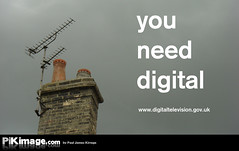Today's outlandish ham radio idea: plop a repeater on the surface of the moon.
This came up during a discussion on Twitter, of course. The main challenge would, of course, be getting to the moon. Also, the repeater would be have to significantly larger than a satellite repeater because it would have to have a significantly higher power budget. Path loss from the earth to the moon (one way) is between 190 and 200 decibels, so a transmitter power of at least a couple hundred watts would be desired, more than can be handled in your typical cubesat.
In order to power this device, a substantial solar array will be needed, and the lander will have be developed to self-deploy the array on landing. The station's antennas will also need some way to track the earth, as we'd want to use relatively highly directional antennas for best results. Presumably all the signals will be coming from the earth, and so an antenna whose beamwidth is only slightly wider than the earth's apparent size from the moon's surface (how big is that, anyway?) would make sense. At the very least the deployment system has to find the earth initially; since the moon is tidally locked once you've found it it shouldn't move a whole lot, but I think libration movement probably exceeds one earth diameter when seen from the moon's surface and so active tracking would probably be a net gain.
This is, of course, completely impractical, but it would be fun. And probably very expensive. And the EME people would probably complain to high heaven if we ever did it.
This came up during a discussion on Twitter, of course. The main challenge would, of course, be getting to the moon. Also, the repeater would be have to significantly larger than a satellite repeater because it would have to have a significantly higher power budget. Path loss from the earth to the moon (one way) is between 190 and 200 decibels, so a transmitter power of at least a couple hundred watts would be desired, more than can be handled in your typical cubesat.
In order to power this device, a substantial solar array will be needed, and the lander will have be developed to self-deploy the array on landing. The station's antennas will also need some way to track the earth, as we'd want to use relatively highly directional antennas for best results. Presumably all the signals will be coming from the earth, and so an antenna whose beamwidth is only slightly wider than the earth's apparent size from the moon's surface (how big is that, anyway?) would make sense. At the very least the deployment system has to find the earth initially; since the moon is tidally locked once you've found it it shouldn't move a whole lot, but I think libration movement probably exceeds one earth diameter when seen from the moon's surface and so active tracking would probably be a net gain.
This is, of course, completely impractical, but it would be fun. And probably very expensive. And the EME people would probably complain to high heaven if we ever did it.






